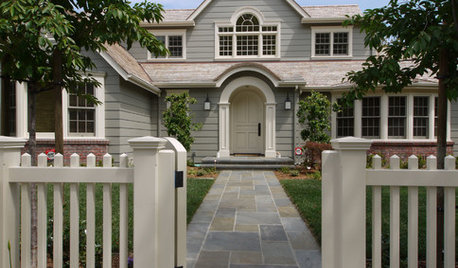'Top Hat' Blueberry Bush - Winter Care?
allisonw
16 years ago
Featured Answer
Sort by:Oldest
Comments (46)
tapla (mid-Michigan, USDA z5b-6a)
16 years agoallisonw
16 years agoRelated Professionals
Milwaukee Landscape Architects & Landscape Designers · Southfield Landscape Architects & Landscape Designers · Brockton Landscape Contractors · Concord Landscape Contractors · Edwardsville Landscape Contractors · Franklin Landscape Contractors · Laguna Hills Landscape Contractors · Golden Valley Landscape Contractors · Kuna Window Contractors · Brushy Creek Fence Contractors · Chandler Fence Contractors · Georgetown Fence Contractors · Rome Fence Contractors · Sioux City Fence Contractors · South Yarmouth Fence Contractorstapla (mid-Michigan, USDA z5b-6a)
16 years agotapla (mid-Michigan, USDA z5b-6a)
16 years agoallisonw
16 years agotapla (mid-Michigan, USDA z5b-6a)
16 years agogardengal48 (PNW Z8/9)
16 years agobluemarlin
16 years agogardengal48 (PNW Z8/9)
16 years agourak
16 years agojustaguy2
16 years agotapla (mid-Michigan, USDA z5b-6a)
16 years agojustaguy2
16 years agodartagnanpluck
16 years agotapla (mid-Michigan, USDA z5b-6a)
16 years agodee_43
15 years agotapla (mid-Michigan, USDA z5b-6a)
15 years agodee_43
15 years agotapla (mid-Michigan, USDA z5b-6a)
15 years agodee_43
15 years agotapla (mid-Michigan, USDA z5b-6a)
15 years agotschulties
15 years agotapla (mid-Michigan, USDA z5b-6a)
15 years agofilix
15 years agofilix
15 years agocobra1351
14 years agotapla (mid-Michigan, USDA z5b-6a)
14 years agodaninchicago
14 years agotapla (mid-Michigan, USDA z5b-6a)
14 years agofuzzy4
14 years agotapla (mid-Michigan, USDA z5b-6a)
14 years agofuzzy4
14 years agotapla (mid-Michigan, USDA z5b-6a)
14 years agofuzzy4
14 years agogreenjeans3
14 years agotapla (mid-Michigan, USDA z5b-6a)
14 years agodottisdad_yahoo_com
13 years agogreenman28 NorCal 7b/8a
13 years agocedoty_msm_com
13 years agotapla (mid-Michigan, USDA z5b-6a)
13 years agocedoty_msm_com
13 years agotapla (mid-Michigan, USDA z5b-6a)
13 years agotapla (mid-Michigan, USDA z5b-6a)
13 years agobecky07
12 years agobecky07
12 years ago
Related Stories

EDIBLE GARDENSSummer Crop: How to Grow Blueberries
Plant blueberries in spring or fall for garden beauty through three seasons — and a sweet superfood in summer
Full Story
CONTAINER GARDENSPatio-Perfect Berry Bushes Like You’ve Never Seen
Small enough for pots but offering abundant fruit, these remarkable bred berries are a boon for gardeners short on space
Full Story
GARDENING GUIDESGreat Design Plant: Grow Blueberries for Their Fruit and More
Eastern gardeners should consider growing blueberry plants for their delicious fruits, bee-friendly spring blooms and brilliant fall foliage
Full Story
GARDENING GUIDESSpring Citrus Care Reaps Months of Sweet Rewards
Learn how to tend citrus trees in spring and ways to preserve their delicious fruit
Full Story
LIFESimple Pleasures: A Long Winter’s Nap
This time of year we can always use a little extra rest. Make it easy with these ideas for daytime napping
Full Story
HOUSEKEEPINGOutdoor Home Prep to Do Before Hard Winter Hits
Avoid cracking, rusting and rotting during freezes by taking care of these tasks now
Full Story
HOUSEKEEPINGHow to Clean and Care for Your Mattress
See what the experts recommend to protect your mattress from dust, moisture and stains
Full Story
LIGHTINGHouse Hunting? Look Carefully at the Light
Consider windows, skylights and the sun in any potential home, lest you end up facing down the dark
Full Story
WOODWORKINGHow to Clean and Care for Your Butcher Block
Keep butcher block counters and boards looking sharp as a knife — and sanitized for safe food prep — with this advice from a pro woodworker
Full Story
GARDENING GUIDES6 Plants That Beat Butterfly Bush for the Wildlife Draw
It's invasive, a nonnative and a poor insect magnet. Check out these better alternatives to butterfly bush in the garden
Full Story







paulallen